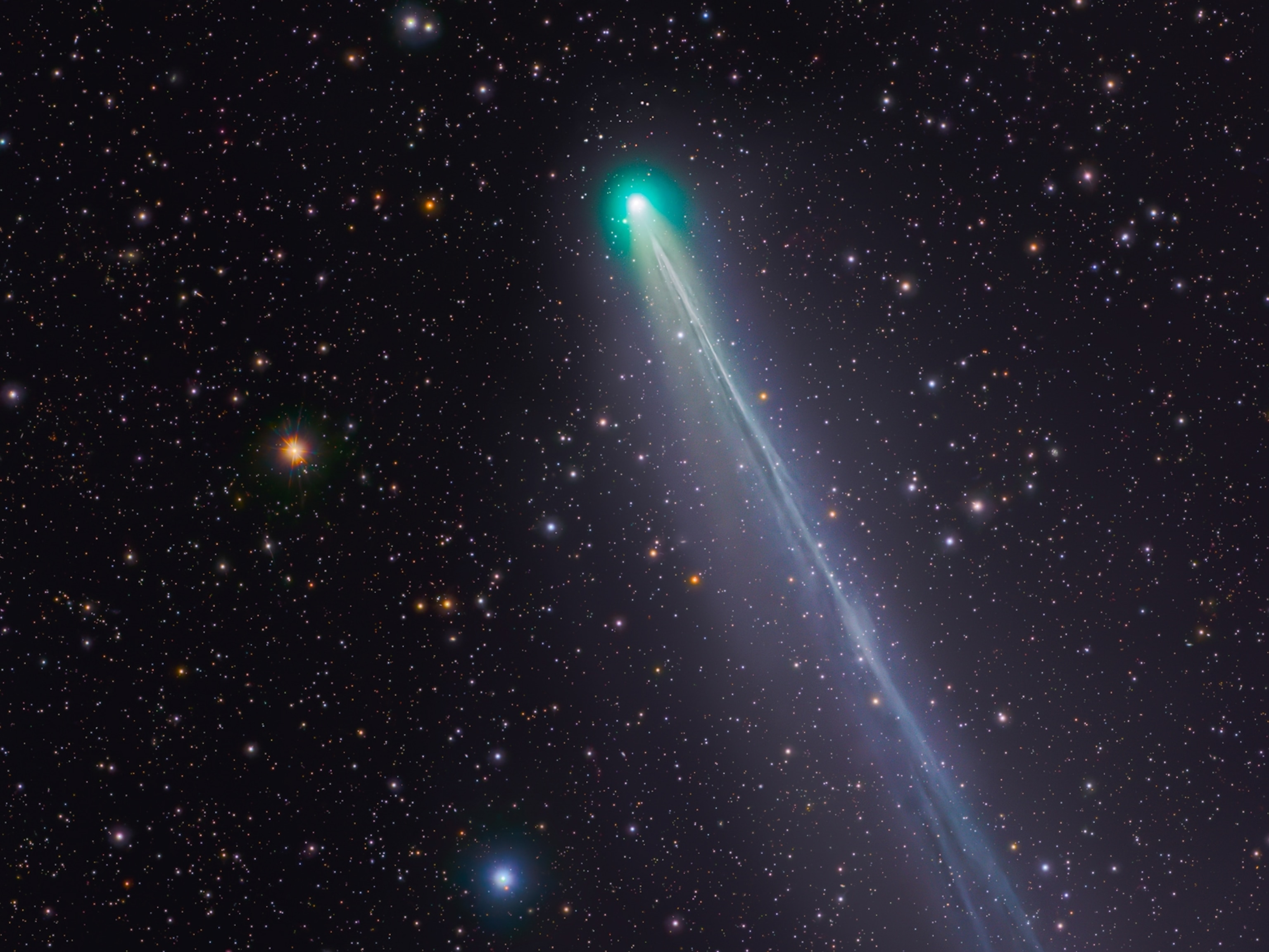
Get Ready for Artificial Meteor Showers
A Japanese company aims to create on-demand sky shows by 2018. Here’s how it would work.
On an evening in the not too distant future, the night sky may be filled with shooting stars made by human hands.
Natural meteor showers occur when Earth plows through trails of debris shed by passing comets. When this celestial schmutz slams into our atmosphere at breakneck speeds, the debris burns up and creates fiery streaks of light.
Now, if a Japanese start-up called ALE has its way, a satellite capable of generating artificial meteor showers will be in orbit sometime in the next two years. From 314 miles (500 kilometers) above Earth’s surface, the orbiter will shoot metal spheres the size of blueberries into the upper atmosphere.
As these particles move across the sky at roughly 17,400 miles (28,000 kilometers) an hour, the spheres will burn into brilliant crisps—painting the night with colorful streaks on demand.
Take that, Roman candles.
ALE’s particles are larger than most found in natural meteor showers, ensuring a longer burn and a bigger, brighter fireball, according to company spokesperson Rie Yamamoto. What’s more, ALE’s meteors would move across the sky slower than the natural variety, further lengthening their burn time.
And depending on the metals used to make the spheres, the company could create meteors of many different colors, using the chemistry of terrestrial fireworks to conjure up a rainbow of high-altitude flames.
Want a scarlet meteor, like the ominous red comet in Game of Thrones? Shoot a pellet made of strontium. Do you desire a sea-foam green streak across the sky? Make your meteoroid out of copper.
There’s no denying the entertainment value of ALE’s “Sky Canvas” plan, which came to company CEO Lena Okajima after watching the Leonid meteor shower 15 years ago. Some news outlets have even suggested a link between ALE and the 2020 Tokyo Olympics’ opening ceremony, despite the company’s insistence that it isn’t currently involved.
Space Debris Simulator
But ALE maintains that its high-flying pyrotechnics will also serve a scientific purpose. By shooting particles of known composition and velocity into Earth’s atmosphere, ALE hopes to learn more about how space junk—from defunct satellites to spent rocket parts—burns up when it reenters Earth’s atmosphere.
Moriba Jah is director of the University of Arizona’s Space Object Behavioral Sciences program and an expert on space junk. He is skeptical that ALE’s satellite will substantially improve the science—especially because of his concerns that the project may create debris of its own by inadvertently hitting other satellites with would-be meteors.
“Before putting stuff in space—and especially doing something like [ALE’s satellite]—we need to think quite carefully about what we put up there and what we do,” says Jah. “You certainly don’t want to be doing that in the vicinity of other things.”
ALE says that it is taking necessary precautions, such as developing a proprietary warning-system algorithm based on Space-Track.org, a public U.S. government database that contains orbital data for thousands of space objects.
What’s more, Yamamoto says, ALE’s simulations show that even without any safety measures, the chance of the company’s meteors hitting other satellites is roughly one in a hundred million.
However, Jah says that Space-Track.org mostly deals in a type of orbital data that encodes an object’s general motion but not its precise, minute-by-minute location, potentially lessening ALE’s accuracy. “That made me a bit uncomfortable,” says Jah.
Still, if ALE can ensure that its showers are safe, the company stands a chance of beating nature at its own pyrotechnic game.
These celestial fireworks probably wouldn’t be in the budget for family birthdays—unless your dad is Elon Musk. AFP reported in 2015 that each individual particle costs about a million yen ($8,100) for ALE to produce. That’s in addition to the costs associated with the satellite itself, not to mention its launch.
Anyone who can afford this particular brand of entertainment may not have to wait long to place an order: Yamamoto says that ALE will launch its first satellite into orbit by 2018—giving stargazers a new reason to look up at the night sky.
Follow Michael Greshko on Twitter.





